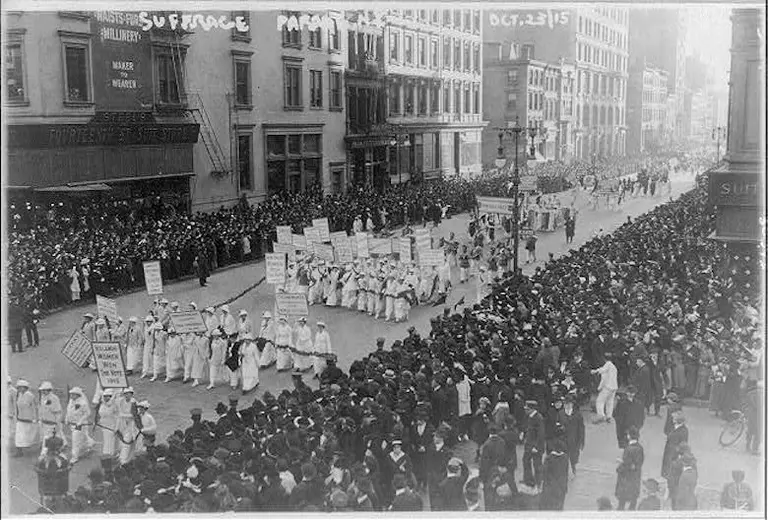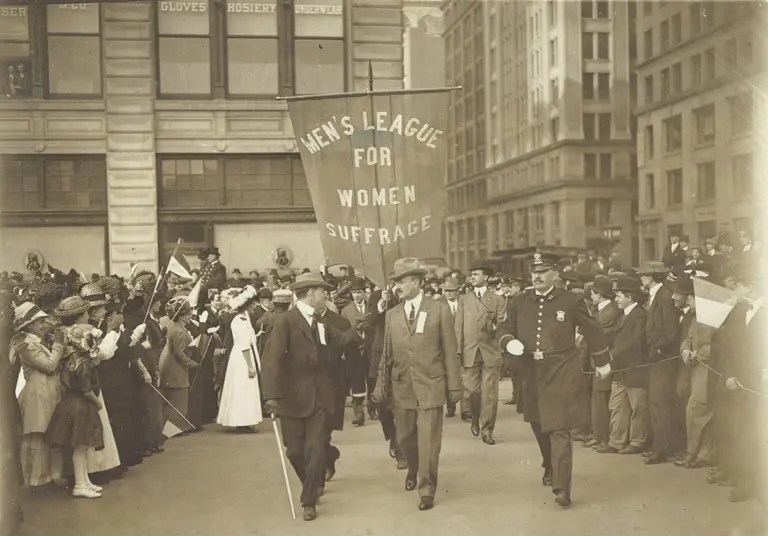
Suffragists marching, probably in New York City in. New York, 1915. [Photograph] Retrieved from the Library of Congress
106 years ago, New York women voted for the first time
Read on

Suffragists marching, probably in New York City in. New York, 1915. [Photograph] Retrieved from the Library of Congress

Pre-election parade for suffrage in NYC, in which 20,000 women marched. 1915. [Photograph] Retrieved from the Library of Congress

Members of the Men’s League for Women’s Suffrage March in a 1915 Suffrage Parade, via the Carrie Chapman Catt Papers at Bryn Mawr College